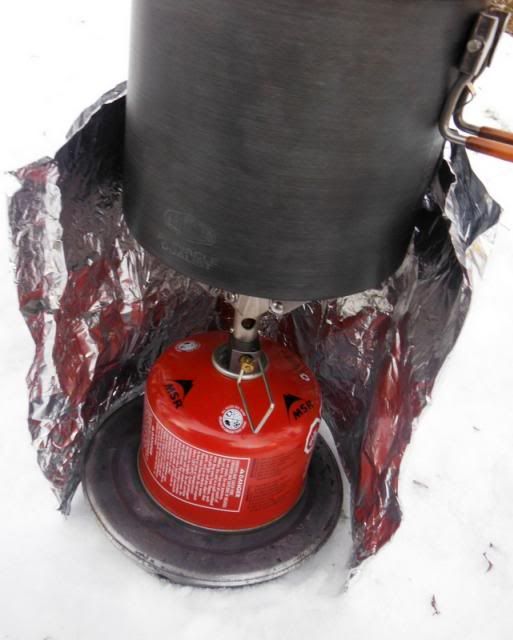Posted by: bluefish
Cannister low limits. - 01/08/14 11:33 AM
Bored, with a pinched sciatic nerve keeping me from working this morning; I decided to run a little impromptu test for my own edification. I boiled 1 liter of water with my MSR Micro-Rocket and MSR Fuel in about 4 1/2 minutes in 7 degree F air temp. The cannister was around 60 when I started (I measured the temp of the can with my elec. tester probes) and I used a flame diverter between the ground and the cannister and a windbreak made of heavy foil wrapped about 3/4 of the way around and 2" from the side of the pot and stove. There wasn't much of a breeze, so wind wasn't much of a factor. I was pleasantly surprised at the very little loss in function. Since this set-up is light and compact, I may very well use it this weekend on an overnight instead of my liquid fuel stove. Has anyone had similar experience? I've been very hesitant to use it in single digits, but it seems as long as the cannister is pre-heated and care is taken to not overheat it, but reflect some heat back to it, it works pretty darn well. Sorry if this is one of those beat to death from 5 years ago topics. 
